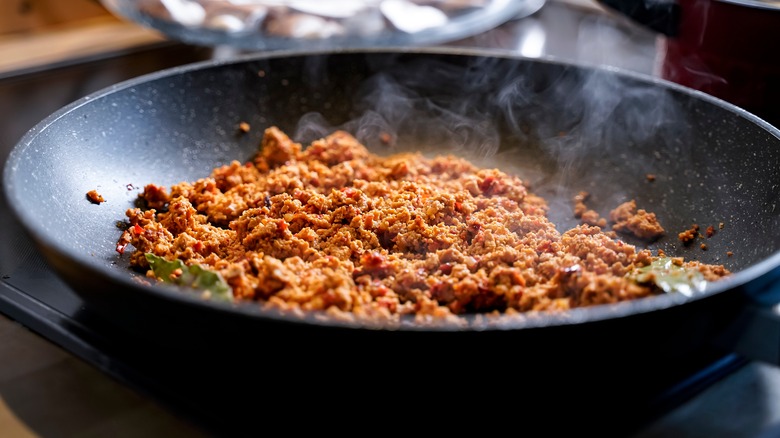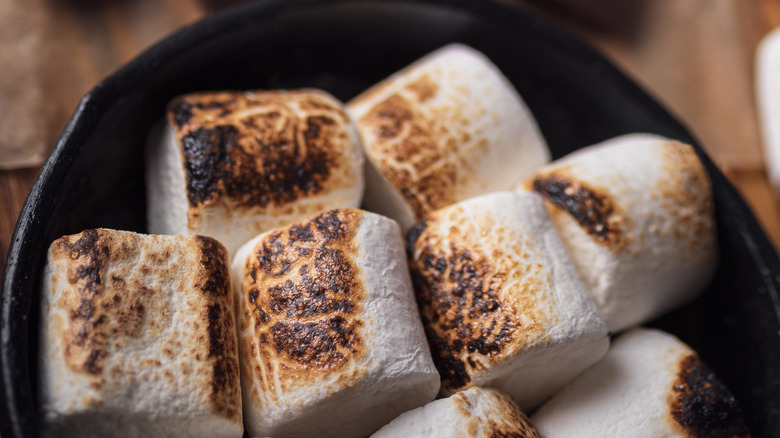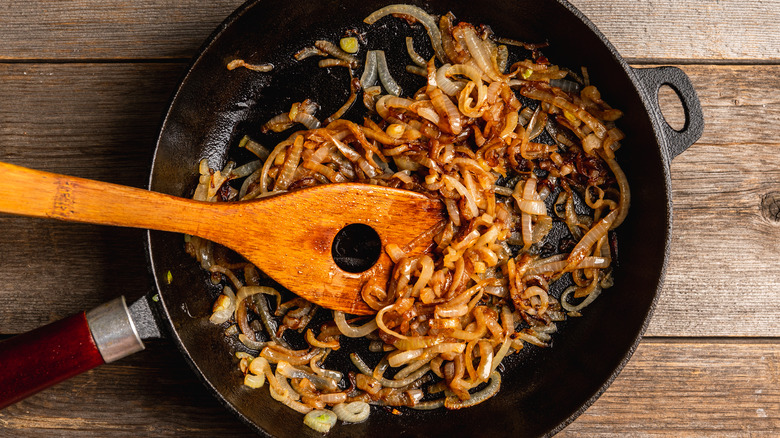The Real Difference Between The Maillard Reaction And Caramelization
Cooking is not just an art — there's science involved as well, and getting the tastiest flavors involves knowing the chemistry involved. Two popular processes that chefs and home cooks use to up the quality of their food are the Maillard reaction and caramelization. Both cause food to turn brown, otherwise known as browning — creative right? But there are key differences between them, and just because they both create the same brown gradient doesn't mean the final products will taste the same.
The main difference between the Maillard reaction and caramelization is the way chemical compounds react with one another inside the food itself. When using the Maillard reaction, the amino acids in proteins and the sugars start to interact with one another, eliciting different flavors and aromas. In caramelization, sugar molecules break down without interacting with proteins, also creating new flavors in the process.
The Maillard reaction
To get the Maillard reaction or caramelization to occur in the first place, you're going to need to dry your food. This is because both processes take a lot of heat to begin activation, and if the food is still moist, then browning may not occur. The Maillard reaction generally takes a lower temperature to activate compared to caramelization — somewhere between 285-300 degrees Fahrenheit.
The Maillard reaction is also used by flavor scientists to better understand what compounds create different flavors, and they use this knowledge to make artificial ones. Specifically, during the Maillard reaction, the reactive carbonyl group in the sugar molecule interacts with the nucleophilic amino group in the protein's amino acid, which then forms an unstable glycosylamine compound. The compound then gets rearranged via the Amadori rearrangement process, transforming the chemicals into ketosamines. After this, the ketosamines can be rearranged in a variety of ways, making all the different combinations of flavors and odors.
Caramelization
Unlike the Maillard reaction, caramelization typically starts to activate at 320 degrees Fahrenheit and above, but it can happen at 230 degrees depending on the sugar. Usually, the brown color that comes from caramelization is a result of fructose melting since it has a much lower melting point than other sugars. Eventually, the sugar boils, and depending on the sugar you used it might've even broken apart into separate molecules, such as sucrose — which breaks down into fructose and glucose. After the sugar boils, chemical reactions create a variety of different flavors for you to enjoy. Caramelization can happen in a variety of foods as well, such as the onions in the picture above.
Diacetyl — which is produced at the beginning of the caramelization process — results in a butterscotch flavor, whereas furans create a nuttier flavor. However, it's important to note that overdoing caramelization can cause the sugar to completely break down, burning your food. On top of this, since the Maillard reaction has a lower temperature threshold to begin an activation, sometimes you can get products from both caramelization and the Maillard reaction in your food.



